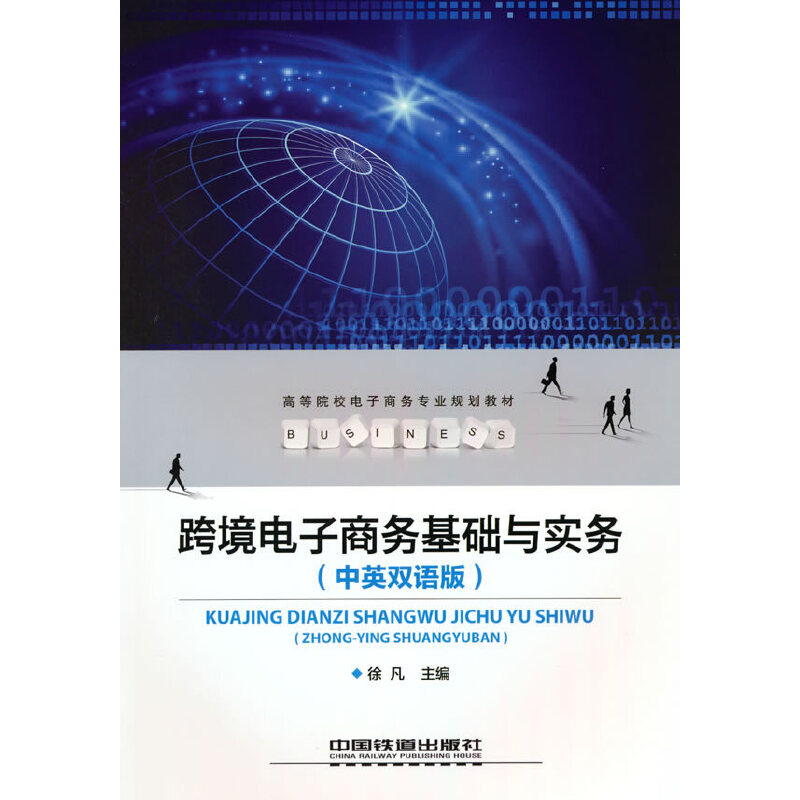国际商务沟通(英文版)(慕课版) / 高等院校立体化创新经管教材系列,江苏省首批线上线下混合式一流本科课程教材,国家慕课配套教材
定价:¥48.00
作者: 杨智华,邵怡,张小衡
出版时间:2022-06
最新印次日期:2025-8
出版社:清华大学出版社
试读
- 清华大学出版社
- 9787302605324
- 1-3
- 437350
- 42264872-5
- 16开
- 2022-06
- 314
- 212
- 经济学
- 经济与贸易类
- 国际贸易、国际商务
- 本科
作者简介
内容简介
本书以培养具有民族自信、国际视野的中国声音传播者为目标,结合国际商务沟通实践的变化和现代信息技术工具的应用,详细介绍了跨文化沟通基本知识和日常商务沟通、异议与索赔、商务报告、口头演讲、求职写作与面试的思路和技巧。
为了尽可能地贴近国际商务沟通实践并满足国际化人才培养需求,本书正文采用全英文编写,在国际商务专业情境中,引导读者从总体上把握跨文化沟通基本知识,深入理解商务沟通基本技巧和主要国家文化差异,并能够应用于商务沟通实践。针对重点和难点内容设计,选用了相关问题和案例,且配有丰富的在线课程资源和拓展阅读资料。
本书既可以作为高等院校经管类专业本科生和国际商务专业研究生学习国际商务函电、国际商务沟通、国际商务英语等课程的教材,也可以作为国际商务各领域从业人员的自学、参考书籍。
为了尽可能地贴近国际商务沟通实践并满足国际化人才培养需求,本书正文采用全英文编写,在国际商务专业情境中,引导读者从总体上把握跨文化沟通基本知识,深入理解商务沟通基本技巧和主要国家文化差异,并能够应用于商务沟通实践。针对重点和难点内容设计,选用了相关问题和案例,且配有丰富的在线课程资源和拓展阅读资料。
本书既可以作为高等院校经管类专业本科生和国际商务专业研究生学习国际商务函电、国际商务沟通、国际商务英语等课程的教材,也可以作为国际商务各领域从业人员的自学、参考书籍。
目录
Contents
Part 1 Basics of Business Communication
Chapter 1 Understanding Business Communication 3
1.1 Introduction to Communication 3
1.1.1 Definition of Communication 3
1.1.2 Elements of the Communication Process 3
1.1.3 Classification of Communication 5
1.2 Introduction to Business Communication 6
1.2.1 Business Communication Definition 6
1.2.2 Effective Business Communication 7
1.3 Verbal and Non-verbal Communication in Business 7
1.3.1 Verbal Communication 8
1.3.2 Non-verbal Communication 16
1.4 Visual Communication 18
Exercises 24
Chapter 2 Intercultural Business Communication 29
2.1 Introduction to Intercultural Communication 29
2.1.1 Understanding Cultural Differences 29
2.1.2 Cultural Differences in Non-verbal Communication 32
2.1.3 Definition of Intercultural Communication 34
2.2 Intercultural Communication Skills in Workplace 34
2.2.1 Barriers to Intercultural Business Communication 34
2.2.2 Effective Intercultural Communication in Business 37
Exercises 40
Part 2 Routine Business Communication
Chapter 3 Writing Business Letters 49
3.1 Elements of Business Letters 49
3.1.1 Essential Elements 49
3.1.2 Optional Elements 54
3.2 Formats of Business Letters 57
3.2.1 Basic Styles 57
3.2.2 Margins and Space 59
3.3 Envelopes of Business Letters 60
3.3.1 Contents and Formats of Envelopes 60
3.3.2 Etiquette of Folding a Business Letter 61
3.4 Guidelines for Writing Business Letters 63
3.4.1 Clarity 63
3.4.2 Conciseness 64
3.4.3 Correctness 65
3.4.4 Concreteness 66
3.4.5 Consideration 66
3.4.6 Courtesy 67
3.4.7 Completeness 68
Exercises 68
Chapter 4 Establishment of Business Relations 70
4.1 Finding Prospective Customers 70
4.2 Writing Letters to Establish Business Relations 71
4.2.1 Understand the Structure 72
4.2.2 Make Your Letter Easy to Read 74
4.3 Reach Your Customers Online 76
4.3.1 Company Profile 76
4.3.2 Description of Products or Services 78
4.3.3 Make Your Messages Online Appealing 78
Exercises 79
Chapter 5 Formation of Contracts 81
5.1 Negotiation for Contracts 81
5.2 Inquiry 82
5.2.1 Types of Inquiries 82
5.2.2 Typical Outline of Inquiries 82
5.2.3 Replies to Inquiries 83
5.3 Offer 85
5.3.1 Validity of Offers 85
5.3.2 Non-Firm Offers 86
5.3.3 Typical Outline of Offers 87
5.4 Counter-Offer 88
5.4.1 Typical Outline of Counter-Offers 88
5.4.2 Counter-Offer Letter Study 89
5.4.3 Useful Expressions 91
5.5 Acceptance 92
5.5.1 Countersignature 92
5.5.2 Orders from Buyers 93
5.5.3 Confirmation of Orders from Sellers 94
5.5.4 Return of Countersigned Contracts 96
5.5.5 Extended Skills: to Draft a Contract for International Sale of Goods 96
Exercises 99
Chapter 6 Claim and Resolution 102
6.1 Claim 102
6.1.1 Tips for a Well-organized Claim Letter 102
6.1.2 Claim Letter Study 103
6.2 Response to Claim 104
6.2.1 A Letter to Acknowledge the Receipt of Claim 104
6.2.2 A Letter to Favorably Resolve the Claim 105
6.2.3 A Letter to Unfavorably Resolve the Claim 105
Exercises 106
Part 3 Reports, Proposals and Presentations
Chapter 7 Business Reports and Proposals 111
7.1 Business Reports 111
7.1.1 Types and Writing Styles of Business Reports 111
7.1.2 Writing a Business Report 114
7.1.3 Components of Business Report 119
7.2 Proposals 128
7.2.1 Types of Proposals 128
7.2.2 Components of a Proposal 129
Exercises 132
Chapter 8 Oral Presentation 135
8.1 About Business Presentations 135
8.2 Making Effective Oral Presentations 137
8.2.1 Steps of Making a Presentation 137
8.2.2 Developing Presentation Skills 152
Exercises 156
Part 4 Employment
Chapter 9 Employment Messages 163
9.1 Build toward Career 163
9.1.1 Analyze What You Have to Offer 163
9.1.2 Make Yourself More Desirable to Employers 164
9.2 Create your Résumé 165
9.2.1 Plan your Résumé 165
9.2.2 Write Your Résumé 166
9.2.3 Polish Your Résumé 171
9.3 Customize Your Cover Letter 172
9.3.1 Solicited and Unsolicited Cover Letters 172
9.3.2 Online Application Form 176
Exercises 176
Chapter 10 Job Interview 179
10.1 Understand Job Interviews 179
10.1.1 Purposes of Job Interviews 179
10.1.2 Types of Job Interviews 180
10.2 Prepare for and Ace Job Interviews 182
10.2.1 Preparing for the Interview 182
10.2.2 During the Interview 190
10.3 Follow up Job Interviews 192
10.3.1 Follow-up Messages 192
10.3.2 Letters of Acceptance, Rejection and Resignation 194
Exercises 197
References 199
Part 1 Basics of Business Communication
Chapter 1 Understanding Business Communication 3
1.1 Introduction to Communication 3
1.1.1 Definition of Communication 3
1.1.2 Elements of the Communication Process 3
1.1.3 Classification of Communication 5
1.2 Introduction to Business Communication 6
1.2.1 Business Communication Definition 6
1.2.2 Effective Business Communication 7
1.3 Verbal and Non-verbal Communication in Business 7
1.3.1 Verbal Communication 8
1.3.2 Non-verbal Communication 16
1.4 Visual Communication 18
Exercises 24
Chapter 2 Intercultural Business Communication 29
2.1 Introduction to Intercultural Communication 29
2.1.1 Understanding Cultural Differences 29
2.1.2 Cultural Differences in Non-verbal Communication 32
2.1.3 Definition of Intercultural Communication 34
2.2 Intercultural Communication Skills in Workplace 34
2.2.1 Barriers to Intercultural Business Communication 34
2.2.2 Effective Intercultural Communication in Business 37
Exercises 40
Part 2 Routine Business Communication
Chapter 3 Writing Business Letters 49
3.1 Elements of Business Letters 49
3.1.1 Essential Elements 49
3.1.2 Optional Elements 54
3.2 Formats of Business Letters 57
3.2.1 Basic Styles 57
3.2.2 Margins and Space 59
3.3 Envelopes of Business Letters 60
3.3.1 Contents and Formats of Envelopes 60
3.3.2 Etiquette of Folding a Business Letter 61
3.4 Guidelines for Writing Business Letters 63
3.4.1 Clarity 63
3.4.2 Conciseness 64
3.4.3 Correctness 65
3.4.4 Concreteness 66
3.4.5 Consideration 66
3.4.6 Courtesy 67
3.4.7 Completeness 68
Exercises 68
Chapter 4 Establishment of Business Relations 70
4.1 Finding Prospective Customers 70
4.2 Writing Letters to Establish Business Relations 71
4.2.1 Understand the Structure 72
4.2.2 Make Your Letter Easy to Read 74
4.3 Reach Your Customers Online 76
4.3.1 Company Profile 76
4.3.2 Description of Products or Services 78
4.3.3 Make Your Messages Online Appealing 78
Exercises 79
Chapter 5 Formation of Contracts 81
5.1 Negotiation for Contracts 81
5.2 Inquiry 82
5.2.1 Types of Inquiries 82
5.2.2 Typical Outline of Inquiries 82
5.2.3 Replies to Inquiries 83
5.3 Offer 85
5.3.1 Validity of Offers 85
5.3.2 Non-Firm Offers 86
5.3.3 Typical Outline of Offers 87
5.4 Counter-Offer 88
5.4.1 Typical Outline of Counter-Offers 88
5.4.2 Counter-Offer Letter Study 89
5.4.3 Useful Expressions 91
5.5 Acceptance 92
5.5.1 Countersignature 92
5.5.2 Orders from Buyers 93
5.5.3 Confirmation of Orders from Sellers 94
5.5.4 Return of Countersigned Contracts 96
5.5.5 Extended Skills: to Draft a Contract for International Sale of Goods 96
Exercises 99
Chapter 6 Claim and Resolution 102
6.1 Claim 102
6.1.1 Tips for a Well-organized Claim Letter 102
6.1.2 Claim Letter Study 103
6.2 Response to Claim 104
6.2.1 A Letter to Acknowledge the Receipt of Claim 104
6.2.2 A Letter to Favorably Resolve the Claim 105
6.2.3 A Letter to Unfavorably Resolve the Claim 105
Exercises 106
Part 3 Reports, Proposals and Presentations
Chapter 7 Business Reports and Proposals 111
7.1 Business Reports 111
7.1.1 Types and Writing Styles of Business Reports 111
7.1.2 Writing a Business Report 114
7.1.3 Components of Business Report 119
7.2 Proposals 128
7.2.1 Types of Proposals 128
7.2.2 Components of a Proposal 129
Exercises 132
Chapter 8 Oral Presentation 135
8.1 About Business Presentations 135
8.2 Making Effective Oral Presentations 137
8.2.1 Steps of Making a Presentation 137
8.2.2 Developing Presentation Skills 152
Exercises 156
Part 4 Employment
Chapter 9 Employment Messages 163
9.1 Build toward Career 163
9.1.1 Analyze What You Have to Offer 163
9.1.2 Make Yourself More Desirable to Employers 164
9.2 Create your Résumé 165
9.2.1 Plan your Résumé 165
9.2.2 Write Your Résumé 166
9.2.3 Polish Your Résumé 171
9.3 Customize Your Cover Letter 172
9.3.1 Solicited and Unsolicited Cover Letters 172
9.3.2 Online Application Form 176
Exercises 176
Chapter 10 Job Interview 179
10.1 Understand Job Interviews 179
10.1.1 Purposes of Job Interviews 179
10.1.2 Types of Job Interviews 180
10.2 Prepare for and Ace Job Interviews 182
10.2.1 Preparing for the Interview 182
10.2.2 During the Interview 190
10.3 Follow up Job Interviews 192
10.3.1 Follow-up Messages 192
10.3.2 Letters of Acceptance, Rejection and Resignation 194
Exercises 197
References 199








